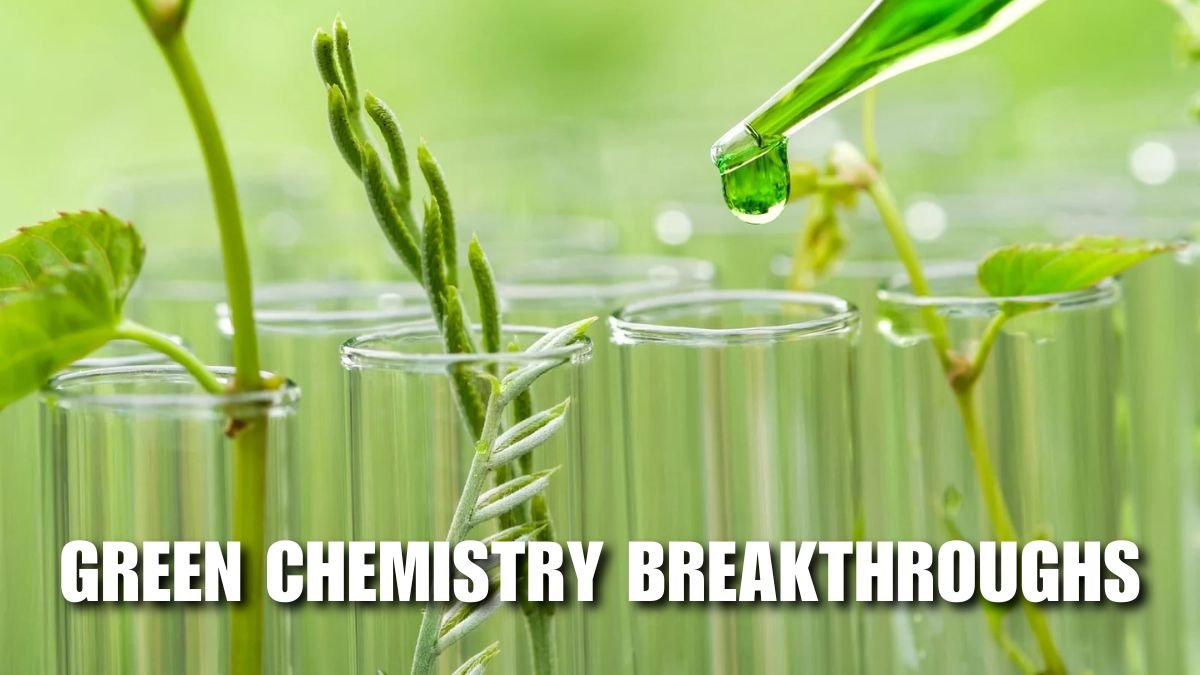Green Chemistry Breakthroughs: Plastic pollution, carbon emissions, and unrestricted usage of resources, among others, have turned out to be acute issues in the modern world. That is when the concept of green chemistry is coming as a revolution. It is not a science involving the laboratory only but has also made its way into industry, market and day to day life affairs. Green chemistry proves a very significant contribution, particularly, to sustainable packaging. It encourages the use of environmentally safe packaging materials and processes which in turn are made of renewable resources and biodegradable. The greatest benefit of the change is that it decreases its reliance on fossil fuel, mitigates pollution and creates materials that disintegrate naturally.
Shift to renewable resources
The utilization of optimum renewable resources is one of the important principles of green chemistry. Packaging has long been based on petroleum based plastics, which are unsafe to the environment and not renewable. Green chemistry, on the contrary, introduces sources that can be naturally recycled, namely, corn starch, sugarcane juice and vegetable oils. Bio plastics made using the same sources are light in weight, energy saving and less polluting. In addition, they can also be produced using less energy, thus emitting fewer carbon emissions.
Importance of biodegradable packaging
The major shortcoming of regular plastic is that it does not break down in years and leaves hazardous waste in the environment. The other relevant requirements of green chemistry that one can think about would be the fact that the materials that are used in packaging ought to be designed in such a manner that they are self immobilized by natural conditions. Biodegradable packaging breaks down in the soil or water following use with no negative results. Not only does it ease pressure on waste on landfills, but it is also made safe to both marine and terrestrial life.
Efforts to reduce waste
Green chemistry has acknowledged that reduction of waste is attainable though it cannot be eradicated altogether. It is a philosophy that is behind the realization of innovations that can cut the packaging waste down to drastics. As another example, miraculous cutlery, one of the inventions, is a poor substitute to plastic cutlery. Besides, the scientists are coming up with enzymes that degrade plastic into its elemental form which makes it recyclable. This saves on wastage as well as makes the process of recycling easier and more conducive to the environment.
Energy efficient production processes
Lessening of energy use and carbon footprint has proved to be a big challenge in the packaging business. This problem is overcome by green chemistry under the energy efficient production techniques. It embraces techniques that need to use less energy and low temperatures. This saves costs and limits emissions of greenhouse gases as well. The packaging in this manner does not only turn environmentally friendly, but the manufacturing is sustainable as well.
Reduction in toxicity and use of safe materials
Most of these packaging materials end up with chemicals, which in most cases, are harmful to the health of human beings and the environment as well. A major tenet of green chemistry is to either avoid the usage of such chemicals in the production at all or to minimize their amount of use. It aims at choosing non-toxic but safe chemicals that do not harm the environment and the consumers. This further reduces the process of production to be clean and sustainable as well.
Use of catalytic technology and enzymes
Green chemistry puts a special importance on catalysts. Enzymes are used as natural catalysts to degrade plastic faster and in a safer manner. This simplifies the process of recycling and causes the recession of pollution. The uniqueness of such technologies is that they consume fewer energy and resources compared to traditional chemical technologies and therefore the overall process is friendly to the environment.
Examples of green chemistry in real life
Not just on a paper there is an adoption of the principles of green chemistry which as well finds application in the real life. Indian entrepreneurial firm Bakkies has also created edible cutlery made of rice flour, wheat and sorghum. It is entirely non-vegetarian, free of preservatives and free of fat and is not wasted after its consumption. In the same manner, UK company Notpla has created a proprietary coating by using seaweed instead of plastic laminates resulting in fully recyclable and compostable packaging. Bio-plastics like PHA and PLA, derived of corn starch, sugar cane or microbial fermentation and degradable naturally are also becoming popular.
Enzyme-based recycling and connected packaging
The scientists have now come up with enzymes, which decompose plastic back to its original building blocks. This renders plastic recyclable and encourages counter-cyclical economy. Another idea that is becoming popular is the connection of packaging that’s achieved through barcodes and QR codes on the packaging. This minimizes the requirement of big print and extra content and the consumer is able to obtain detailed information regarding the product via digital medium.
Future direction of sustainable packaging
In the future, the combination of green chemistry and sustainable packaging will be even stronger. With the development of technology, we can expect more advanced recycling methods, new bio-based materials and packaging designs that also reduce carbon emissions during transportation. In the coming time, packaging will not only be light and durable, but its manufacture will also consume minimal water and energy. Efforts in this direction will take us to a future where packaging waste will be close to zero and the environment will be completely protected.
Conclusion
The principles of green chemistry are not just a part of scientific research, but it has become a necessary change in our lifestyle. Through sustainable packaging, we can not only protect the environment but also lay the foundation of a circular economy, in which there is maximum reuse of resources and minimum waste. If industry, government and consumers adopt these principles together, we can move towards a clean, safe and balanced future.
